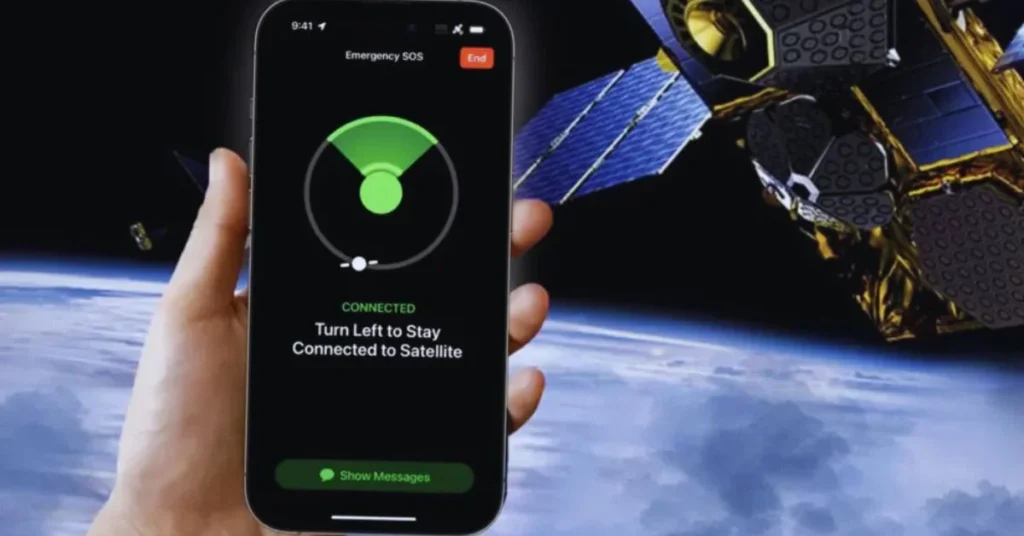SpaceX / Starlink Phone-to-Satellite Connectivity: The Future of Mobile Networks
Introduction
SpaceX, the aerospace company founded by Elon Musk, has once again made headlines with a groundbreaking announcement. Through its satellite internet division, Starlink, the company is preparing to introduce SpaceX/Starlink Phone-to-Satellite Connectivity, which allows smartphones to communicate directly with satellites without relying on cell towers. This development could mark a revolutionary moment for mobile technology in the United States, bridging gaps in connectivity and reshaping how people access the internet.
Background and Context
Starlink already operates one of the world’s largest low Earth orbit (LEO) satellite constellations, providing high-speed internet to rural and underserved areas, as well as maritime and aviation sectors. Currently, most mobile networks depend on terrestrial infrastructure—cell towers, fiber optic cables, and base stations—to connect users to the internet. However, these networks leave coverage gaps, especially in rural or remote regions. SpaceX’s plan to bypass this infrastructure entirely could redefine the boundaries of mobile access.
The motivation behind this project stems from the growing need for universal internet access. With billions of people still offline and natural disasters often destroying ground-based infrastructure, direct-to-device satellite communication represents a robust and reliable alternative.
Read More: MyPasokey Review: Features, Benefits, and Security Explained
Technology Behind the Connectivity
The technology driving phone-to-satellite connectivity is both complex and innovative. Starlink satellites orbit at relatively low altitudes (about 550 km above Earth), reducing latency compared to traditional geostationary satellites. This makes real-time data transmission feasible for mobile users.
To make this possible, both the satellites and smartphones will require specialized hardware. Satellites need advanced phased-array antennas capable of focusing signals directly to handheld devices, while smartphones may need small modifications or software updates to support satellite frequency bands.
Additionally, regulatory approvals from the Federal Communications Commission (FCC) are essential for spectrum allocation. Managing bandwidth and avoiding interference with existing cellular networks will be a key technical and policy challenge. Latency, while lower than traditional satellites, still needs to be minimized for a seamless user experience, and bandwidth allocation must support thousands of simultaneous connections.
Potential Applications
The practical applications of this technology are wide-ranging and transformative:
- Emergency Communications: After natural disasters like hurricanes or wildfires, when cell towers are destroyed, phones could still connect to satellites for critical emergency calls and messages.
- Rural and Underserved Areas: Millions of Americans in remote regions could gain reliable internet access without the need for costly new cell tower installations.
- Global Roaming: Travelers could maintain continuous connectivity across countries and oceans without switching SIM cards or networks.
- Military and Defense: Armed forces could use the system for secure communication in remote or hostile environments.
- Maritime and Aviation: Ships and airplanes could offer constant connectivity without depending on expensive specialized equipment.
Benefits and Opportunities
The introduction of phone-to-satellite connectivity offers immense benefits. It promises to bridge the digital divide, providing equitable access to education, healthcare, and economic opportunities. It could also create new business models for telecom companies, which might partner with satellite providers to offer hybrid connectivity plans combining terrestrial 5G and space-based networks.
Moreover, it can support the Internet of Things (IoT) revolution. Billions of IoT devices in remote areas—such as agricultural sensors, shipping trackers, and environmental monitors—could stay connected via satellites, enhancing data collection and operational efficiency.
Challenges and Limitations
Despite its promise, the technology faces several obstacles. Technically, mobile phones have limited battery power and small antennas, which makes maintaining a stable satellite link challenging. Maintaining high data speeds and low latency will require sophisticated engineering and possibly new phone hardware.
Regulatory hurdles are another concern. The FCC and other global regulatory bodies must allocate spectrum bands, approve orbital slots, and address interference issues. There’s also competition from companies like AST SpaceMobile and Lynk Global, which are pursuing similar satellite-to-phone networks.
Finally, the cost to consumers could initially be high, as building and launching thousands of satellites is capital-intensive. Pricing models will need to be competitive to attract widespread adoption.
Market and Economic Impact
The U.S. mobile telecom industry could see dramatic shifts if Starlink succeeds. Traditional mobile network operators might collaborate with or compete against satellite providers. This competition could drive lower prices, better coverage, and faster innovation.
The project could also spark job creation in satellite manufacturing, rocket launches, ground station operations, and software development. Infrastructure investments will flow not only into satellites but also into cloud computing, cybersecurity, and edge processing systems required to manage the massive data flow.
Internationally, this could accelerate global internet penetration, especially in developing countries, positioning the U.S. as a leader in space-based communication technologies.
Future Roadmap
Elon Musk has suggested that the phone-to-satellite service could be available within the next two years. The rollout is likely to begin with text messaging and basic voice services before expanding to full broadband data. Over time, integration with smartphones could become seamless, with devices automatically switching between cell towers and satellites depending on coverage.
As more satellites are launched and technology matures, the network could support millions of concurrent users. The long-term vision is a global, borderless network that ensures internet access anywhere on Earth.
Conclusion
SpaceX’s plan to enable SpaceX / Starlink Phone-to-Satellite Connectivity represents a bold leap forward in mobile technology. It has the potential to eliminate dead zones, revolutionize emergency response, and bring billions of people online. While technical and regulatory challenges remain, this initiative could reshape the mobile industry and redefine what it means to be connected. If successful, it will mark a historic turning point—transforming the sky above into the next layer of the mobile internet



